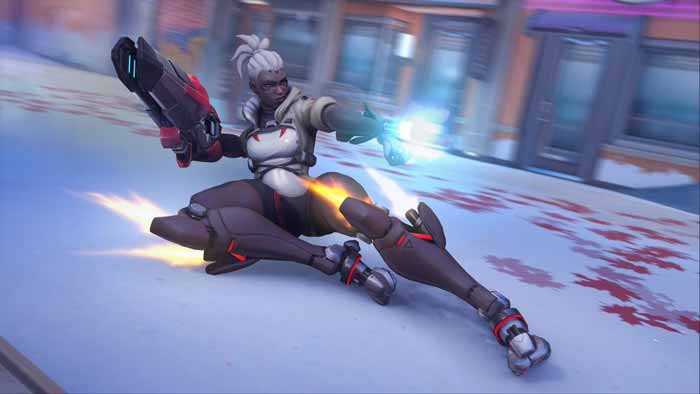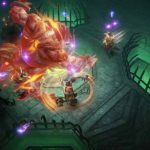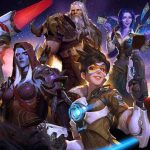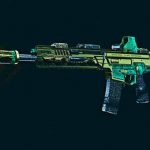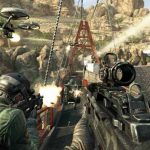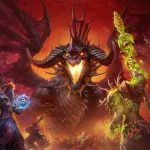Earlier this week, Activision Blizzard published a post on their website about their “Diversity Space Tool“. Developed by subsidiary King, it’s a tool for rating video game characters along certain axes in order to rate their relative diversity. Several people then pointed out that sounded mildly dystopian.
What is Diversity Space Tool
The gaming industry has long had a problem with diversity, and there have been initiatives by different studios over the years to rectify the issue. But not all efforts, while well-intentioned, are good. In a blog post, Activision Blizzard detailed a decision to use a “character diversity tool that quantifies ethnicity, beauty, cognitive ability, and other things that indicate “you’re different,” is one such measure that feels particularly bizarre if not offensive.
Developed by King and MIT Game Labs, this diversity tool was meant to “create and monitor guidelines for character conception and creation.” King globalization project manager Jacqueline Chomatas further explained the tool’s mission, saying, “The Diversity Space Tool is a measurement device, to help identify how diverse a set of character traits are and in turn how diverse that character and cast are when compared to the ‘norm.’”
This tool can “weigh new character designs against [the established baseline] to measure their diversity.”
Apparently the Call of Duty: Vanguard and Overwatch 2 dev teams beta tested the tool and thought it was helpful. The reception was “immediate and enthusiastic,” and Activision Blizzard plans to launch the tool internally during the summer and Q3.
Needless to say, people over on Twitter have been less-than-enthusiastic about Activision Blizzard’s diversity tool. It skews a little too close to phrenology, psuedoscience in which traits can be measured by looking at people’s skulls. There are also questions like, how is the “norm” baseline even decided on? Obviously, Activision Blizzard’s intentions are good: it’s trying to diversify its characters, but attempting to translate diversity into numerical values seems to miss the point.
Activision Blizzard Has A New DIVERSITY Tool For Making Games
How does Diversity Space Tool work?
The idea of a “tool” to make characters more diverse and inclusive may seem a little hard to wrap your head around. In practice, it has to be more than just, say, a pop-up reminder that between 2017 and 2021 nearly 80% of the highest selling games in the world featured white, male protagonists (according to a study conducted by Diamond Lobby). It needs to become a part of the incubation process from the start, baked into the pipeline as an unmissable and consistent step – which is exactly what this tool was designed to be.
“The Diversity Space Tool is a measurement device, to help identify how diverse a set of character traits are and in turn how diverse that character and casts are when compared to the ‘norm’,” explains Chomatas. Once it establishes a baseline for typical character traits (which is done by the creative team working closely with DE&I experts), it can then weigh new character designs against it to measure their diversity. During this process, the tool can also uncover unconscious bias, such as why certain traits are seen as “male” vs. “female,” or why characters from certain ethnic backgrounds are given similar personalities or behaviors.
In this effort, the Diversity Space Tool can clearly delineate between token characters and true representation. By starting at the character conception stage, the tool allows King and others, to ask these important questions at the earliest possible moment, to promote more thoughtful creative choices from the ground up – which, in turn, leads to games that are more representative of their player base.
The Objective of Diversity Space Tool
After Fanbyte’s story gained attention on Twitter, Activision Blizzard updated the post about the Diversity Space Tool and added a clarifying note at the top. “The objective of using the tool is to uncover unconscious bias by identifying existing norms in representation and acknowledging opportunities for growth in inclusion,” the added note says. “It is not a substitute for any other essential effort by our teams in this regard, nor will it alter our company’s diversity hiring goals.”
Activision Blizzard, of course, don’t have a lot of goodwill at the moment when it comes to trust in their employment practices. The company is the defendant in several lawsuits, including by the State Of California regarding an alleged culture of workplace harassment, by by an employee alleging harassment and retaliation, and by New York City regarding CEO Bobby Kotick’s fitness to negotiate the company’s impending sale to Microsoft for $69 billion. Employees have also recently led walkouts over changes to work-from-home and vaccination policies, while QA staff at subsidiary Raven Software are voting on whether to unionise.
The real Objective of the tool
The objective of using the tool is to uncover unconscious bias by identifying existing norms in representation and acknowledging opportunities for growth in inclusion. It is not a substitute for any other essential effort by our teams in this regard, nor will it alter our company’s diversity hiring goals. Over the past several years, the development of the tool was done with the support of all our employee DE&I networks, and we collaborated with external partners to create an even more robust tool.
The tool isn’t meant to be used in isolation; teams would sit down with company DE&I staff to identify existing norms and then discuss, educate, consult, and collaborate on how a character’s representation is expressed beyond those norms. This process is intended to create a conversation where our developers, assisted by the tool, challenge assumptions, assess choices, and find opportunities for authentic representation to be fostered in our games.
Activision Blizzard is committed to reflecting the diversity of its millions of players around the world through representation and inclusion in its games as well as its employees. Our intent with this blog entry was to share an in-progress piece of our journey in this endeavor. We recognize and respect that all people may be on their own, unique point in their journey with DE&I. The Diversity Space Tool is not a definitive evaluation of diversity in game content; rather, it is a bridge in opening previously unspoken conversations into how thoughtful inclusion can happen – and thrive – in games.
Activision Blizzard is the holding company formed from the merger of Blizzard Entertainment’s then-owner Vivendi Games and Activision, the video game producer behind Call of Duty. The merger was finalized on July 9, 2008. Vivendi became the majority shareholder of Activision Blizzard with 54% of the stock.
Activision Blizzard is divided into three key business segments: Activision Publishing, which handles the development, production, and distribution of video games from its subsidiary studios. Blizzard Entertainment, which handles the development, production, and distribution of Blizzard’s games.
We create the most epic interactive gaming and entertainment experiences on earth immersing players in new, unimagined worlds. Our products help build community and create social platforms that bring people together.
Microsoft shocked the tech and gaming world on January 18th when it announced it would acquire Activision Blizzard in a $68.7 billion deal, by far the biggest ever in gaming.
Also read:
- Is Tifa in a relationship with Cloud in Final Fantasy Remake? What is Tifa’s bra size?
- What Is Yu-Gi-Oh! Nexus? What Are The Modes For Players To Choose?
- Farming for Materials in Arknights: What are the new farming spots?
- How to Get the Mechagodzilla Skin Bundle in COD Warzone? How To Buy & Unlock It?
- Who Are The Best Supports In LoL Patch 12.9? What Is The New Tier List?
